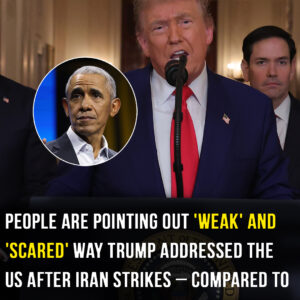Iranian Military Retaliation: Missile Strikes Target U.S. Military Installations Following Nuclear Facility Attacks
Iran Launches Strategic Counter-Attack Against American Forces in Qatar
Iranian military forces have executed a calculated retaliation against United States military installations, launching six missiles toward American bases located in Qatar’s capital city of Doha, according to multiple intelligence reports. This military response represents the fulfillment of Iran’s promised “decisive response” to recent U.S. strikes on Iranian nuclear infrastructure, marking a significant escalation in Middle Eastern tensions that threatens to destabilize the entire region.
The Iranian missile strikes specifically targeted the Ain al-Asad airbase, which serves as the largest American military installation in the region and currently houses approximately 10,000 U.S. military personnel. This strategic targeting demonstrates Iran’s capability to strike high-value American military assets and represents a direct challenge to U.S. military presence in the Persian Gulf region.
Background: Trump’s Nuclear Facility Strike Operation
The Iranian retaliation comes in direct response to President Donald Trump’s authorization of comprehensive strikes against Iran’s nuclear infrastructure on Saturday evening, June 21st. The American operation targeted three of Iran’s most strategically important nuclear facilities: the heavily fortified Fordow enrichment facility, the primary Natanz nuclear complex, and the Isfahan nuclear technology center.
President Trump characterized the mission as a complete success, claiming that the strikes had “completely obliterated” the targeted nuclear sites. The operation utilized advanced military technology and precision-guided munitions designed to penetrate deep underground facilities and destroy critical nuclear infrastructure while minimizing the risk of widespread radioactive contamination.
The American strikes represented a dramatic escalation in the ongoing confrontation between the United States and Iran over Tehran’s nuclear program. The decision to launch direct military action against Iranian nuclear facilities marked a significant departure from previous diplomatic and economic pressure tactics, signaling the Trump administration’s willingness to use military force to prevent Iranian nuclear weapons development.
Iran’s Strategic Military Response
Iran’s missile strikes on Monday, June 23rd, represented a carefully calculated military response designed to demonstrate Tehran’s capability to strike American military assets while avoiding escalation that might provoke a broader military conflict. The targeting of the Ain al-Asad airbase was particularly significant, as this installation serves as a critical hub for American military operations throughout the Middle East region.
The choice to strike American forces in Qatar, rather than targeting U.S. installations in Iraq or other neighboring countries, reflected Iran’s strategic thinking about regional alliances and diplomatic consequences. Qatar maintains complex relationships with both the United States and Iran, making it a symbolically significant location for Iranian retaliation while potentially limiting broader regional involvement in the conflict.
The six-missile barrage represents a measured response that demonstrates Iranian military capability without crossing thresholds that might trigger massive American retaliation. This calibrated approach suggests that Iranian military leadership is seeking to establish deterrence and demonstrate resolve while avoiding actions that might lead to full-scale military conflict between the two nations.
Regional Impact and Airspace Closures
The immediate regional response to the Iranian missile strikes included the emergency closure of Qatari airspace, reflecting serious concerns about the potential for expanded military conflict and the safety of civilian aviation in the region. This precautionary measure demonstrates how quickly regional military actions can impact international commerce and civilian activities throughout the Persian Gulf area.
The airspace closure affects not only civilian flights but also military operations, logistics support, and emergency response capabilities throughout the region. Qatar’s decision to restrict air traffic reflects the government’s assessment that continued Iranian military action remains a significant possibility and that additional strikes could threaten civilian aircraft and international travelers.
Regional allies and partners of both the United States and Iran are now faced with difficult decisions about how to respond to this escalation while protecting their own national interests. Countries throughout the Middle East must balance their relationships with both superpowers while managing the economic and security implications of expanded military conflict in their region.
Strategic Implications for U.S. Military Presence
The Iranian strikes on American military installations represent a direct challenge to U.S. military presence and influence throughout the Middle East region. The successful targeting of the Ain al-Asad airbase demonstrates Iranian missile technology capabilities and intelligence gathering that allows Tehran to threaten even heavily defended American military installations.
The attack on approximately 10,000 American military personnel stationed at the base creates immediate operational challenges for U.S. military commanders who must now reassess security protocols and defensive measures at installations throughout the region. The scale of potential casualties from such attacks requires careful consideration of force protection measures and possible evacuation or reinforcement options.
For American military planners, the Iranian strikes demonstrate the vulnerability of fixed installations to missile attacks and the need for enhanced defensive systems or alternative basing arrangements. The ability of Iranian forces to successfully target major U.S. military facilities calls into question the security of American military presence throughout the region and may require significant adjustments to operational planning and resource allocation.





